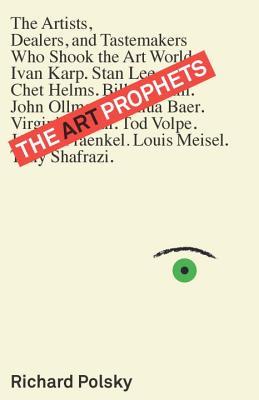
The Art Prophets
The Artists, Dealers, and Tastemakers Who Shook the Art World
- اطلاعات
- نقد و بررسی
- دیدگاه کاربران
نقد و بررسی

August 29, 2011
As art investing has been as much a topic in the news as the art itself, a book on the Warren Buffetts of the art world would seem to make perfect sense. The great disappointment of Polsky’s book is that it fails as a primer on what it takes to be able to identify and exploit opportunity in the art world. Polsky (I Bought Andy Warhol) prefers to describe the 24 hours he spent naked in Walter De Maria’s landscape installation Lightning Field than in plumbing the genius and motivations of Virginia Dwan, De Maria’s generous yet mysterious patron. Polsky’s reflections on what it takes to be an art prophet are fairly generic: “Sometimes a visionary dealer can simply be someone who possesses a master salesman’s touch for getting the potential buyer emotionally involved with the work.” Polsky’s art prophets serve mostly as frames for describing some of the art movements of the past 50 years. This is not to say that chapters on comic book art, poster art, and ceramic sculpture—largely unappreciated in the fine art world—are not insightful. On the other hand, chapters on pop art, outsider art, and earthworks provide little more insight than other books on late 20th-century art. Photos.

August 15, 2011
The author of I Sold Andy Warhol (Too Soon) (2009) returns with a paean to the prophets who saw profits in genres of art that were then outside the mainstream.
After defining his concept of "art prophet," Polsky (Boneheads: My Search for T. Rex, 2011, etc.)—once a gallery owner, now a private dealer—begins his genre journey with Ivan Karp, who discovered Warhol and in some sense propelled public interest in pop art. Then the author moves on to the career of comic-book pioneer Stan Lee and traces the history of that genre from its origins to R. Crumb and graphic novels. Next, he looks at those out in San Francisco who helped create the art of the poster in the 1960s, explores the story of Peter Max and talks about Shepard Fairey's poster of candidate Barack Obama that proved so popular—and litigious. In a sense, all of the artists Polsky discusses are/were outsiders, but he devotes a chapter to the real outsiders—people with no formal training whose works eventually commanded impressive sums at sales. The author continues with a look at Native American art, earthworks (Polsky got to see Robert Samuelson's Spiral Jetty when that massive work emerged once again from the Great Salt Lake that had covered it over in high-water days), ceramics (which had to overcome its "craft" label), photography (featuring Diane Arbus and Richard Avedon), photorealistic painting and street art. In each chapter, Polsky celebrates the individual(s)—dealers, collectors, gallery owners—who first took a chance on that genre, tells us a bit about the early and most significant artists and considers the current status and challenges facing the genre. Unfortunately, the text includes no images of the works he references.
Clear, concise and energized by the author's fiery passion for his subject.
(COPYRIGHT (2011) KIRKUS REVIEWS/NIELSEN BUSINESS MEDIA, INC. ALL RIGHTS RESERVED.)




دیدگاه کاربران